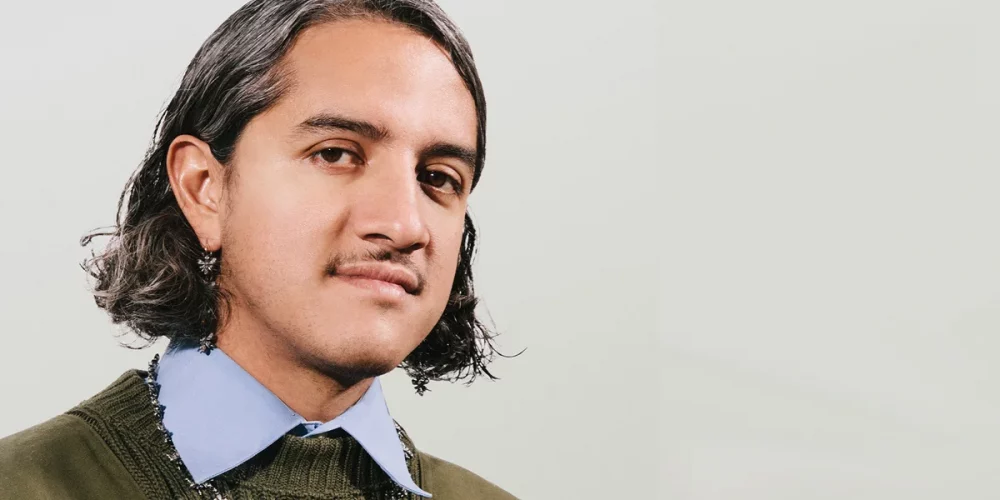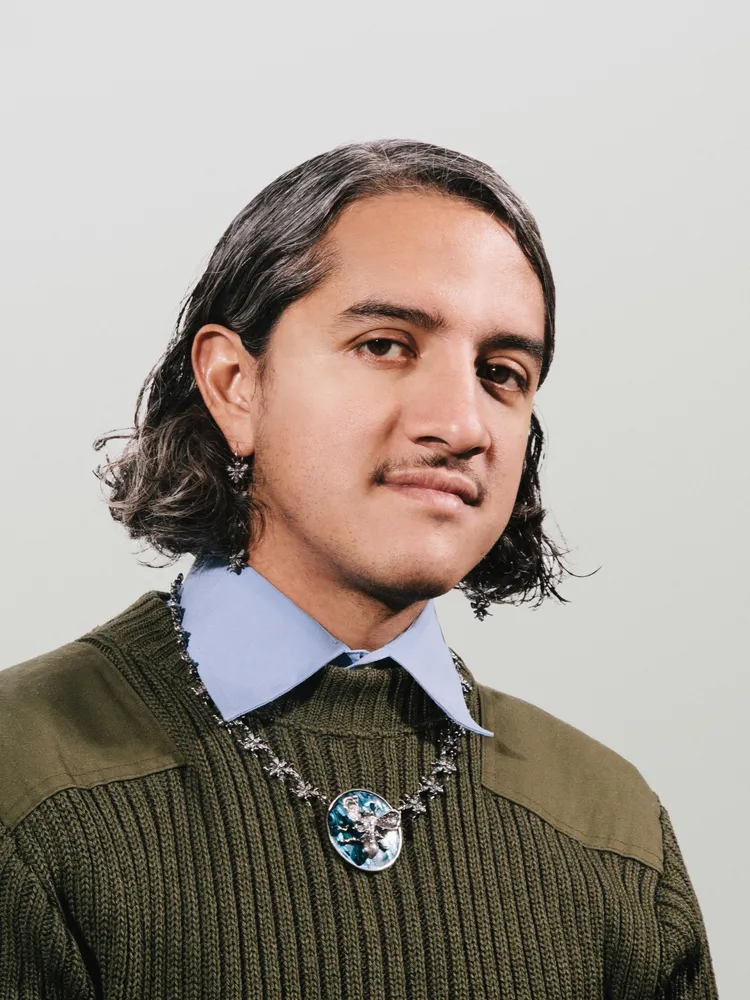
- Source: PAPER
- Author: CLAIRE VALENTINE
- Date: DECEMBER 27, 2017
- Format: ONLINE
Raúl de Nieves: Most Likely to Define American Art

At 33, Raúl de Nieves is experiencing the sort of career explosion that would shake up other artists, throwing them off their game, going to their head or making them lose sight of processes that first got them there. De Nieves is firmly grounded in himself and his practice, though, and was reticent to discuss a myriad of upcoming solo shows and residencies because “it’s a little distasteful.” This modesty is not only charming, it’s authentic, and comes from a place that informs every aspect of his work.
The artist’s show-stopping exhibit at this year’s Whitney Biennial featured a 50-foot, 18-panel window installation that was made to look like colorful stained glass, but was actually fashioned with paper, tape, glue, beads and wood.These materials are also primarily what de Nieves uses to create elaborate beaded sculptures that bring to mind influences of his Mexican heritage (he was raised in the small city of Morelia in central Mexico and now works out of a studio in Brooklyn).
De Nieves’ work naturally lends itself to fashion; in 2013, his sculpture-esque shoes were photographed by Mario Sorrenti alongside Gucci, Fendi and Dolce & Gabbana pieces, and again by Karl Lagerfeld. But De Nieves’ dreams are bigger than any one particular project or collaboration; it seems he intends to eventually scale his work for open public spaces, influencing and interacting with the culture in a big, impactful way.
All the attention you’ve received this year must be a bit of a double-edged sword.
I wasn’t really planning for all of this excitement to be part of my life right now. It’s cool just to see myself grow with my work and understand how important it is to maintain a truthfulness to where it comes from. I want this to blossom in the most positive way.

You create really meticulous work. Has the busier schedule interrupted your practice at all?
My work is very hands-on. I don’t work with fabricators or anything like that, so nothing in that sense has changed. I guess the only thing that has changed is that now I’m able to have deeper discussions with institutions, and that can help me facilitate new ideas and different ways that I wasn’t used to working.
I have more opportunities coming up on my plate, but I’m not trying to dismantle who I am or where my practice comes from in order to fulfill this role of these upcoming exhibitions. Things are changing, but within me I hope that with all these opportunities the only thing that changes within myself is I get to have deeper conversations not just within myself but within an audience that will allow me to open up new ideas within me and my society. We’re all vulnerable people and want to have more interactions with others.
Is institutional approval important to you?
Of course, not that it’s approval so much, but it’s great to be recognized by larger institutions. My work fits into many categories, so it can really go so many places. The Biennial happened; it was amazing and I got to create a very large scale project that had visibility outside and inside the museum so that was really exciting. I’m trying to go towards something maybe in the sense of more public. I’m trying to not just put my art work in gallery settings, but have more of a dialogue with people that don’t necessarily think about art in that sense. It’s the same thing as graffiti art — Once their work is on a big wall and it remains there, a lot of people can see it.
Authenticity is clearly very important to you, which is refreshing.
Exactly. It’s amazing to have all the attention and the press, but at the same time I’m just a normal person. I’m an artist. I sit at my desk and draw. The way that I work is very simple. I personally want to keep myself and my intentions in that realm of being attainable to also just understand how the work is evolving.
I would imagine that those issues of representing yourself find their way into your work, too.
This year I had a series of shows after the Biennial. A lot of them didn’t happen in New York, so I had to adjust myself to new settings in new places and be able to understand how my art work can transform itself in a new country. And maybe I don’t have the same tools there, but the integrity is there so it really shows me that the balance is really there. I’m evolving. I’m adapting to new situations and to me that’s really the best thing I could’ve seen within myself. It’s about adapting to these situations, not overcoming. Art is about an experience so that’s what I’m really trying to let it do.
Photography: Ryan Duffin

